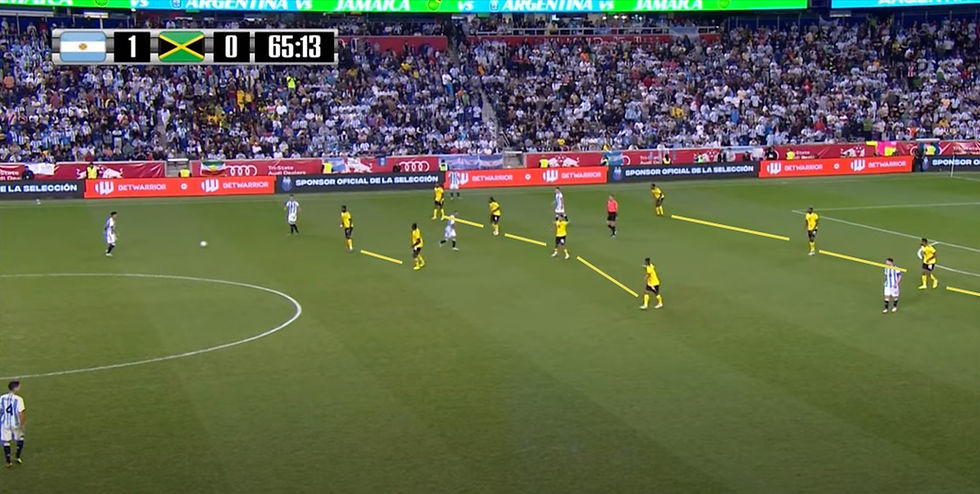MLS: Past, Present and Future
- All Angles Football -
- Apr 11, 2020
- 7 min read
Major League Soccer (MLS) is the top division of football in the USA. It was founded in 1995 as a condition of the USA hosting the 1994 FIFA World Cup. The 2020 season will mark the 25th season for the league which has exponentially grown in the past 25 years. MLS has a bad reputation, especially amongst Americans. Although there has been unbelievable growth for the league, this post goes through the past, present and future of the league and what might need to be changed for MLS to take that extra step up to be a top world football league.
As mentioned, MLS was founded in 1995. The league started play in 1996 with 10 teams. Initially, most of the home stadiums for these MLS teams were NFL stadiums. The league experienced a vast amount of difficulties in its first few years. Some of these included: declining attendances, financial issues leading to the departure of Commissioner Doug Logan, a lack of football-specific stadiums and the first round elimination of the USA national team composed of MLS players which affected the league’s image. The league lost over $250 million in its first 5 years and by 2002, 2 teams were contracted. After a strong performance in the 2002 World Cup by the USA national team, the league began to experience positive growth. The league began to become more financially stable and had aimed to move teams into football specific stadiums rather than playing in NFL stadiums. Expansion teams were beginning to enter the league and many teams were starting to play in football-specific stadiums. A turning point for the league, which had helped its international presence is the Designated Player (DP) Rule. This is what brought David Beckham to the MLS and will be explained later on. New teams continue entering the league and the 2 most recent will be Nashville SC and Inter Miami CF in 2020 which will bring the league to 26 teams. Compare that with 10 teams in 1996. 16 new teams in 25 years - unbelievable growth. However, it doesn’t stop there, there are also new franchises announced for St. Louis, Austin and Sacramento which will begin play in the upcoming years. That makes 29 teams and Commissioner Don Garber recently announced that the 30th team will be announced before the end of the year.
MLS is run differently than the average European football league. These differences have allowed the league to grow at the rate that it has but it is also what is possibly holding the league back from becoming a top world football league. One main difference is that the season runs from March to November rather than the traditional August to May. This affects the transfer market with other leagues around the world and also conflicts with FIFA dates for international breaks and tournaments. It is misaligned with the world football calendar. The high bureaucracy has provided the league with the control and financial stability to grow exponentially and it has also “prevented” the league from becoming dominated by a group of teams like most European leagues have been. However, any effort to stop dominance in football is absurd and will never be successful as it is inherent to football and even with the high bureaucracy of MLS, dominance still exists. Here are a few numbers to show that dominance does exist in MLS.
- LA Galaxy have been to the MLS Cup Final 9 times in their 24 seasons, winning 5 of the 9 times
- DC United have been to the MLS Cup Final 5 times in their 24 seasons, winning 4 of the 5 times
- In the last 4 years, 3 MLS Cup Finals have been between the same two teams (Toronto FC and Seattle Sounders)
Dominance may not exist in the MLS to the extent that it does in La Liga, Bundesliga or the Premier League, but it does exist. There is no doubt that teams such as LAFC, Atlanta United, Seattle Sounders, Toronto FC, LA Galaxy and a couple others perform at a level above the other teams in the league again displaying dominance. As new expansion teams such as Atlanta United and LAFC follow a European model of branding and running their club, this is leading to on field success. Even with a salary cap (which is a limit on the amount of salaries a team can pay players), they will eventually leave other MLS teams behind and dominate the league in the years to come. Top quality players who are paid high wages are not what create dominance. Some teams are run better off the field than others and even if teams follow the salary cap and have similar talent, the clubs who are better run in the front office will naturally see more success. Therefore, a salary cap is just a silly way to try and prevent dominance that is naturally present in football.
MLS is a centralized league. Centralization means that the league has full control and ownership over all properties such as player contracts and teams. MLS is a limited liability company where its franchise owners are “investors” in the company and its players are employees. The finances of the league and all its teams are controlled by the league. A lot of the bureaucracy of the league is a consequence of the single-entity centralized structure. Due to this structure, teams are unable to negotiate their own kit sponsorship deals which are a major source of revenue for today’s football clubs. MLS teams are required to all wear Adidas gear as the league itself has a sponsorship agreement with Adidas rather than each team having their own kit supplier. MLS is also a closed league with no promotion or relegation unlike the traditional European football leagues.
As mentioned, the salary cap restricts the total salary of the team at a certain limit. For the 2019 season, this cap was $4,240,000. As better players generally demand higher salaries, the cap restricts the quality of players that teams are able to bring in. The cap allows clubs and the league to be more financially stable and has helped the league to grow. However, to reach the next level this would have to be abolished as it is restricting top quality talent from coming into the league. The Designated Player rule was introduced to bring David Beckham into the league. This rule allows teams to have up to three players whose transfer fee and wages exceed the salary cap. The players’ wages basically are not counted towards the cap. The clubs hold full financial responsibility for these. This has allowed top talent such as Thierry Henry, David Villa, Kaka, Sebastian Giovinco and more to play in MLS. Many of these DPs have come at a stage past their peak, when they are ready to retire. However, many DPs are starting to be younger players who use the league as a stepping stone to Europe. Currently, the average age of a DP is about 27 years old. Players are becoming more attracted to the league and a good example of this is Sebastian Giovinco leaving Juventus at 28 years old to go play for Toronto FC. This has helped the league to grow globally and attract top talent. Although this has helped the league, three world class players are minimal compared to a whole squad of 30. Therefore, the salary cap still restricts teams from attracting better talent to be more competitive internationally and to help the league grow. A good example of this is that MLS teams struggle in the CONCACAF Champions League against the Liga MX teams due to the quality of players.
Based on what has been written above, to take the league to the next level it would be helpful that MLS:
- Release the salary cap as this would allow better quality talent to be brought into the league and the league would be more competitive and attractive on a global scale
- Line up the MLS season with the world football calendar to create more consistency across transfer windows and international breaks. This could help the league when recruiting talent from overseas. The issue with this is that logistically it can be a challenge due to weather in times such as winter in areas such as Toronto and New York
- Release the single entity structure so that clubs can be fully controlled by owners. By having full control owners can increase investments into the team to attract better talent on the field. Owners would also be able to negotiate their own kit supplier deals which could bring in chunks of sponsorship and merchandise revenue and allow clubs to increase their presence overseas
- Release the closed system of the league so that a promotion/relegation system can be adopted. This could be done now with the “second division” USL. However, the financial gap between the two leagues is too wide for this to happen. As MLS will be at 30 teams soon, it is fair to suggest that the league could abandon the American way of conferences and play-offs and switch to two divisions of MLS. MLS1 and MLS2 each with 15 teams in the league. There would be no issue to have 15 teams in each league and this will attract more international, especially European viewers to MLS due to the familiarity of promotion/relegation rather than conferences and play offs.
There are many factors that have held back the development of football in the USA such as the pay-to-play model at the elementary level and football not being a historically popular sport in the USA. The MLS has displayed fantastic growth and development of football in the USA over the past 25 years. However, to reach the top level of world football certain structures and regulations need to be abandoned, especially the American method of running sports teams and leagues as it is not suitable for football. Although these changes would likely create some financial instability which the league wants to avoid, it is needed to carry the league to the next level. All of the top football clubs and leagues are not necessarily financially stable. Most top football clubs have a large debt and make losses annually. It is understandable that MLS would want to avoid this but for the league to activate its potential to become a top league, MLS has to cut the red tape and follow Europe.




תגובות